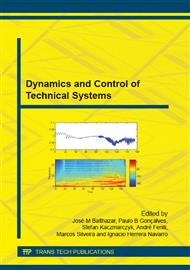p.128
p.137
p.149
p.159
p.170
p.181
p.191
p.206
p.222
High Order and Degree Geopotential and Derivatives Computation Based on the Clenshaw Summation
Abstract:
An artificial satellite subject to the attraction of the Earth is disturbed due to nonsphericaldistribution and non-symmetrical Earth mass. This uneven distribution of mass is expressed by the socalledspherical harmonic coefficients of the Earth potential. For a faster computation, the accelerationderived from the potential is obtained by a series expansion in terms of these harmonics, the fullynormalized Legendre polynomials and their derivatives, and several recursions associated with thelongitude, geocentric latitude and altitude of the center of mass of the satellite. This paper analyzesthe detailed aspects of disturbances in artificial satellites, related with the modeling of the Earth'sgravitational potential as well as numerical implementation of a recursive algorithm to calculate theacceleration of the geopotential based on the Clenshaw summation. In general, one uses recursiveequations of high degree and order to calculate the Legendre polynomials in order to obtain fasterprocessing and numerical accuracy. However, the recursions can yield numerical errors at each stepof the recursion so that higher orders and degrees of harmonics, the accumulated error may be quitepronounced. The computational implementation of the algorithm is carried out by a PC computer.With the implementation of this algorithm it is possible to calculate the geopotential accelerationfor different orbits and different situations. Such approach aims at mitigating the numerical problemsarising from use of extended series expansion when computing recursively the Legendre polynomials.Once the favorable numerical properties are proven, the algorithm can be used in the solution ofpractical problems of orbital space mechanics and for the Brazilian Space Mission.
Info:
Periodical:
Pages:
191-205
Citation:
Online since:
December 2014
Authors:
Price:
Сopyright:
© 2015 Trans Tech Publications Ltd. All Rights Reserved
Share:
Citation:


